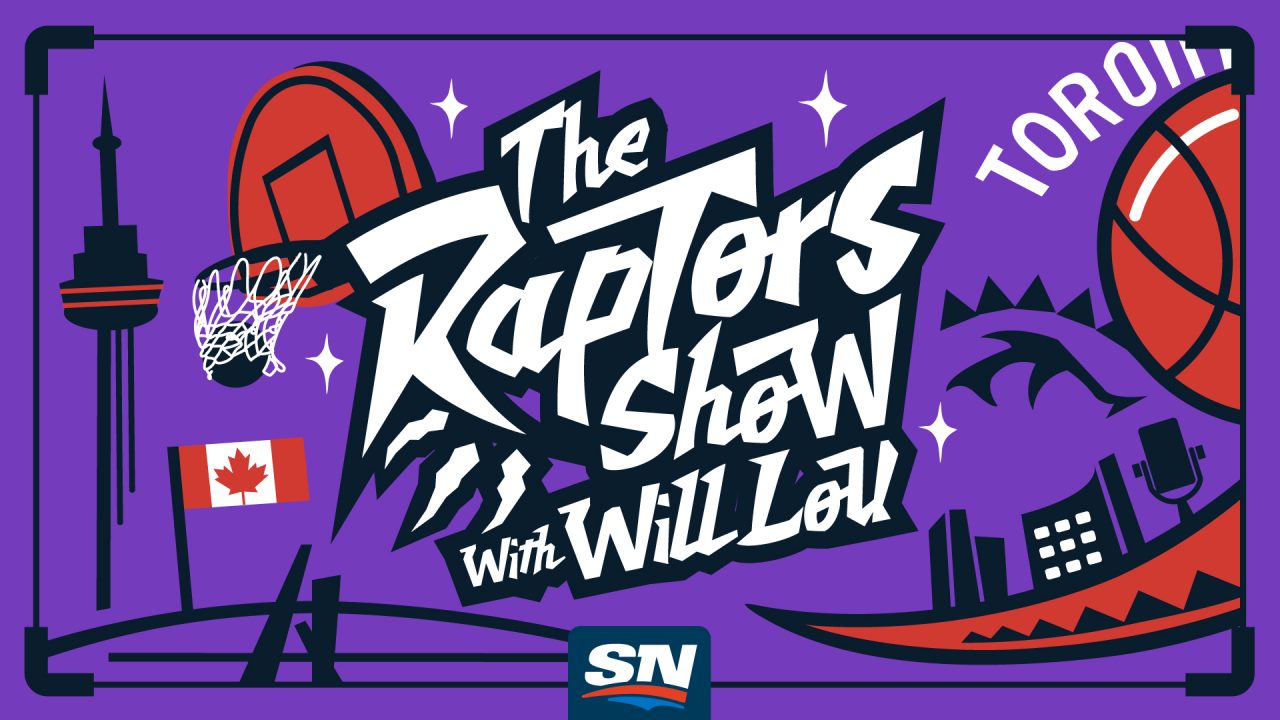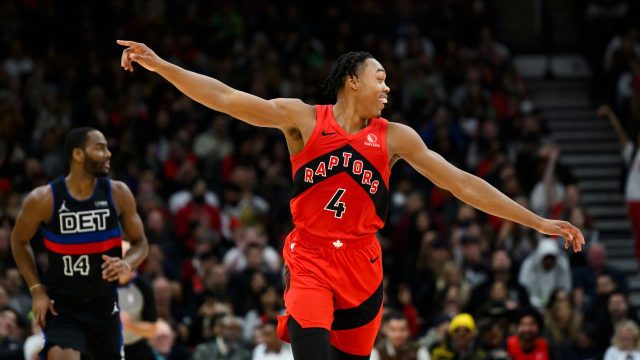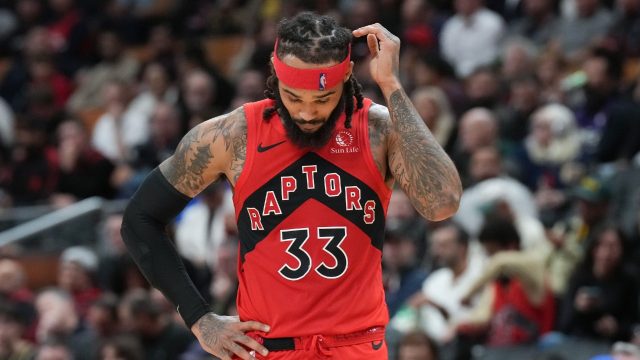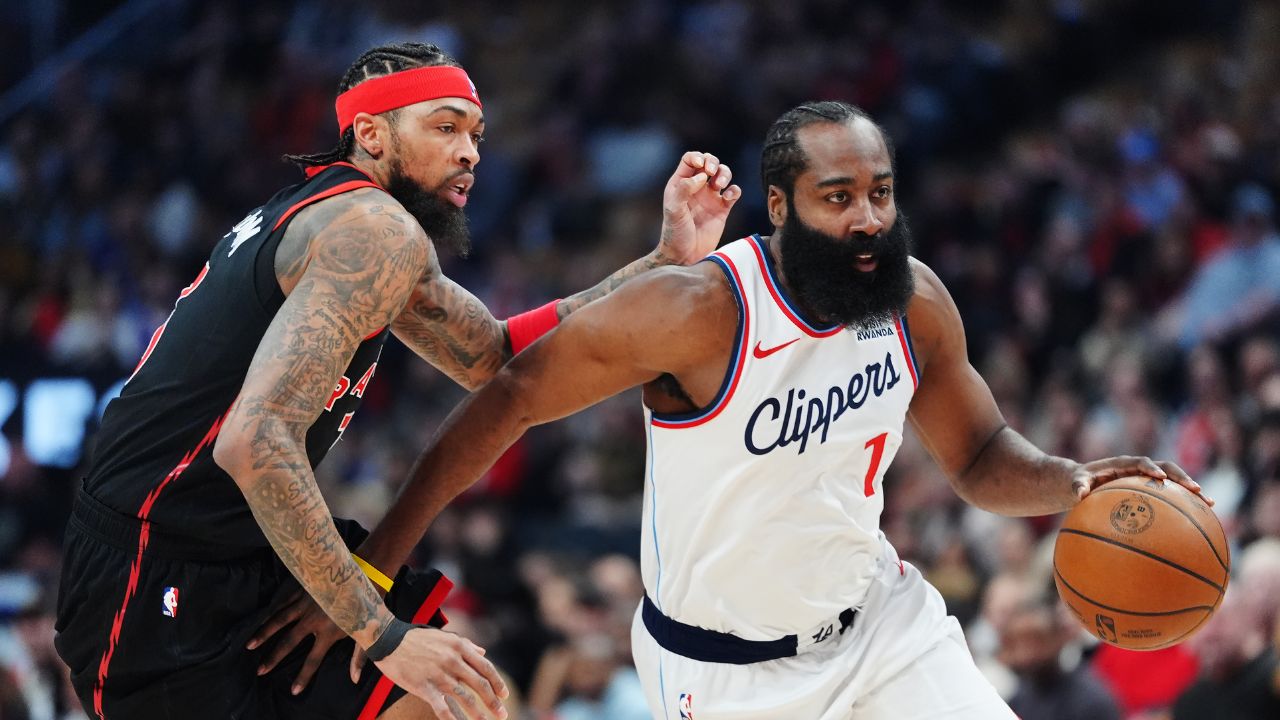
There are a number of ways to win a close basketball game. The Toronto Raptors tried several different approaches over the course of Monday evening, coming up short with each option. Whatever punch the Raptors could muster, the New York Knicks were ready to parry.
A 136-130 loss for Toronto — its second to the Knicks in the last two weeks and their sixth overall in their last seven games – shone a spotlight on the fact that the Raptors don’t have a prominent strength to rely on. They are, to be frank, not a very good basketball team. The Knicks are, and so the Knicks rarely looked uncomfortable when the Raptors pushed back.
We can, and will, look at the specifics of yet another close-but-not-quite loss. You are welcome to care about them. I do, at least in the short-term, as the Raptors could be playing a smarter, better and more informative brand of basketball that might make the day-to-day more enjoyable. None of the micro analysis will change your headline feeling, though, which is that the Raptors just aren’t on par with teams they thought they’d measure themselves against this year in the middle of the East. Too often, they’re barely on par with the teams they thought they’d look down at.
By the game, the reality for the Raptors becomes more obvious. What was fairly clear at last year’s trade deadline, again in free agency, and again at the start of the year grows clearer and clearer: They are not good enough to win right now, not young or asset-rich enough to be sure they’ll be good enough to win later, and the delays in committing to either path have left them with a roster that doesn’t fit around the core, skill sets that don’t fit the new system and a coach whose message doesn’t match the front office’s stated intent.
Things will change by the February 8 trade deadline. They have to. If the Raptors are going to make the time between then and now more effective, more informative and more enjoyable, they need to make peace with a number of things that went wrong Monday to little surprise.
What follows are some takeaways from a loss that drops the Raptors to 9-14.
The starting lineup
Toronto once again started poorly, despite what Tom Thibodeau’s timeout 92 seconds into the game might suggest. The Raptors started the third quarter poorly enough, allowing Julius Randle two attempts in the post against blown angle-and-help coverage on the same possession, that Darko Rajakovic was the one calling the immediate timeout. That group then struggled enough closing the game that Rajakovic turned to Precious Achiuwa over Jakob Poeltl.
For the night, the starters were outscored by six points in their 18 minutes. The Knicks are good, to be sure, but they were without starting centre and defensive- and rebounding-standout Mitchell Robinson, asking a still-green Jericho Sims to start in his place. You can at least understand some of the offensive struggles given the spacing issues, but it’s remarkable how a defence-first group has fallen off so quickly at that end of the floor despite at least two very good individual defenders.
I feel like a bit of a broken record here with the team’s lineup choices. Starting Gary Trent Jr. for Dennis Schroder or Achiuwa for Poeltl won’t resolve much – Trent was very ineffective again Monday and has been as up-and-down as Achiuwa – but the guard swap is probably worthwhile at least to expand Barnes’ playmaking role and see how that looks with nominal spacing.
Other lineup and rotation notes
Rajakovic tried to add more spacing to Barnes-and-bench units, giving him three shooters (in theory) and a big who operates well in space in the second quarter. Barnes looked comfortable with a bit of extra space, on both sides of the pick-and-roll, but Trent, Achiuwa, Malachi Flynn and a freshly-recalled (off a shaky G League stint) Gradey Dick were, predictably, not up to task against arguably the league’s best bench (even down Immanuel Quickley).
The Raptors had some success with three bench players and any two of Barnes, Anunoby and Pascal Siakam, which aligns with earlier results and what we’d expect. That trio has still only played 11 minutes together this year without at least one of Schroder and Poeltl. Even with bench options who aren’t sure-fire contributors, the Raptors need to see more of that.
Flynn had a solid game, by the way, and should probably eat a bit into Schroder’s stranglehold on minutes alongside the core trio on nights Schroder doesn’t have it offensively (lately, better Monday) or defensively (a tough one Monday).
Chris Boucher leaves hurt
Boucher played 10 minutes, getting up eight (!) shots in that time. His shot wasn’t there, and teams just don’t treat him as a true shooting threat, but he at least crashes the offensive glass well out of the corners.
He left the game with a left thigh contusion and did not return.
Julius Randle was as ridiculous as the Raptors transition defence
Sometimes, you play well defensively and just have to tip your hat to a great offensive player.
That was certainly true with Randle’s night, as he made an array of difficult baseline and elbow fadeaways against stout individual defence. He finished with 34 points on 14-of-21 shooting, and he earned it with his ludicrous shot-making.
While Randle’s game is not always the prettiest, he’s very savvy leveraging defensive attention. Whenever the Raptors sent extra bodies to him, he found a way to split enough space for a kick-out, tallying five assists on a night the Knicks shot a torrid 17-of-29 on a pretty open diet of threes. The Knicks also had him screen for Jalen Brunson in spots where, if Anunoby had to help Schroder with Brunson’s drive at the nail, Randle could get a small head of steam off the catch before Anunoby met him back in his path. The Raptors also lost Randle a couple of times once he got off the ball, allowing him to keep possessions alive as a rebounder.
So you tip your cap, to some degree. You absolutely do not, however, have to tip your cap to the Knicks getting 1.7 points per-transition opportunity. That is an abhorrent number, especially against a team that doesn’t run a whole lot. The Raptors’ overall defensive slide the last few weeks has been punctuated by an inexplicable inattention to their transition assignments. (The Raptors also blew a couple of transition opportunities the other way, including a deflating three-on-one opportunity early in the fourth.)
Control what you can control.
The possession battle, and some simple math
The Knicks are doing a bit of a 2022-23 Raptors Lite, leading the league in how many extra shooting possessions they get than an opponent each night. The Raptors set a probably untouchable NBA record for that last year by winning the turnover battle dramatically and doing a solid job on the glass. New York, instead, does a solid job with the turnover battle and is the league’s best rebounding team on both ends.
At halftime, the Raptors had 11 more shooting possessions than the Knicks and finished up 13 for the night. They beat the Knicks at their own game!
So how do you lose with 13 extra looks at the net?
In the first half, the Raptors shot 5-of-22 on threes and 7-of-14 at the line. They squandered their extra opportunities. In the second half, they shot much better, finishing at 49 percent overall, 14-of-39 (35.9 per cent) on threes, and 22-of-30 (73.3 per cent) at the free-throw line. The Knicks, however, shot 60.5 percent overall and 58.6 per cent on threes.
The Raptors’ league-worst shooting puts them at a big enough disadvantage most nights that they have to do a lot of other things well to make up for it. Even when they do, it might not be enough, as we saw in the second half.
Numbers be damned, being dead-last in 3-point shooting means defences can go under most of your actions, clogging up the paint. Siakam and Barnes saw an army any time they attacked a mismatch, as it has been all year, because defences correctly bet that a kick-out pass won’t hurt them as much as a dangerous forward in the paint. All the dribble-handoffs in the world can’t help that, because teams just slide under them and meet you on the other side.
Some small positives
I never feel good about these heavy-negativity pieces. It wears on you. So, quickly, a few positives: Barnes’s three-point shooting continues to impress and is the single most important individual or skill development on the roster this year; Anunoby shot his way out of his brief slump, hitting five threes and attacking well against closeouts or for cutting opportunities; Siakam can still attack lesser or smaller defenders at a very high level, and him and Barnes going into attack mode early in the third helped make this as tight a game as it was. Good players remain good, there just aren’t enough of them, or enough of them who fit with that core group.
What’s next
The Raptors host the Hawks twice this week and the Hornets next Monday. The Heat and Knicks are good, the Hawks solid, but this is probably the lightest six-game stretch on the Raptors’ schedule. They are 0-3 on it to start.
Shots will drop or not. There just isn’t a lot of shooting talent here, and the tweaks to add spacing for Barnes and Siakam are breathing room, not fixes. They are in control of their defence, though, and the slide on that end over the last couple of weeks has to be addressed if this team wants to even think about the play-in tournament, or wherever the goals might lie from here.







